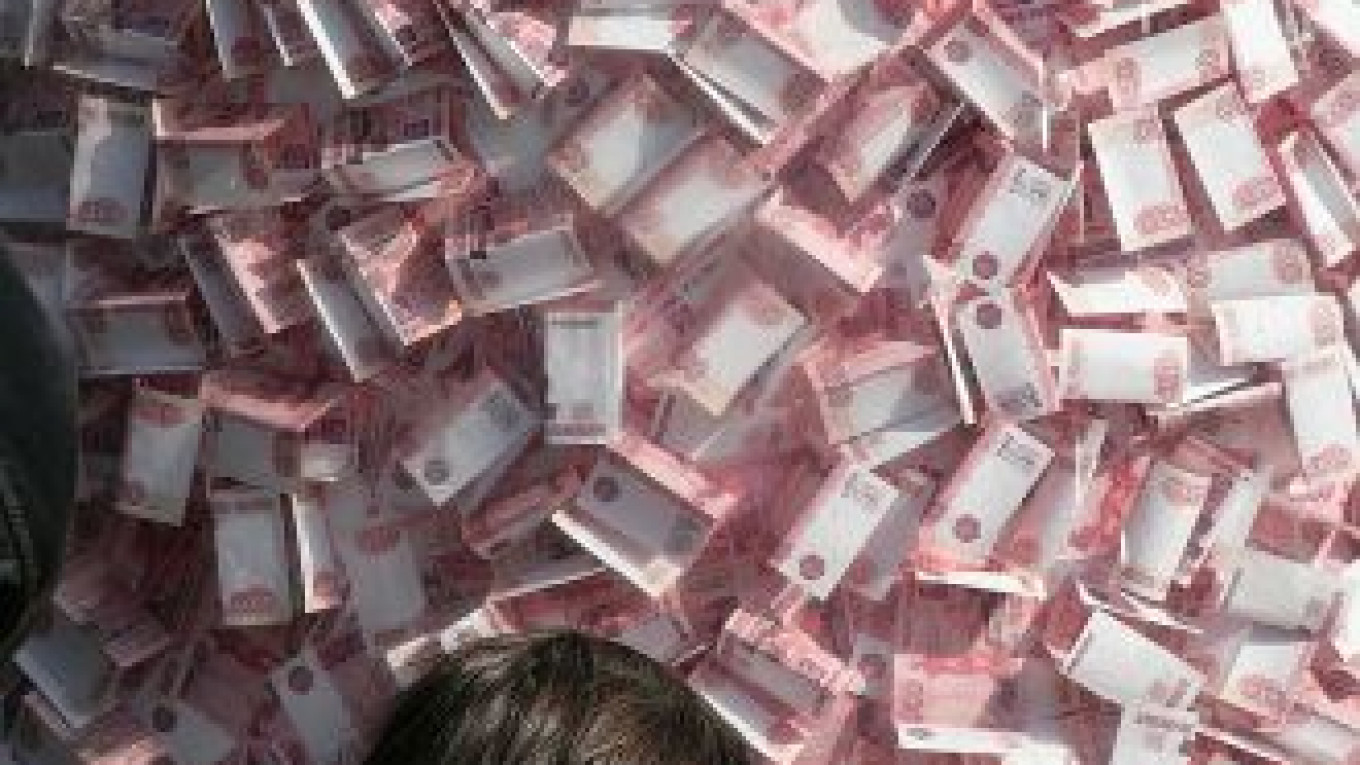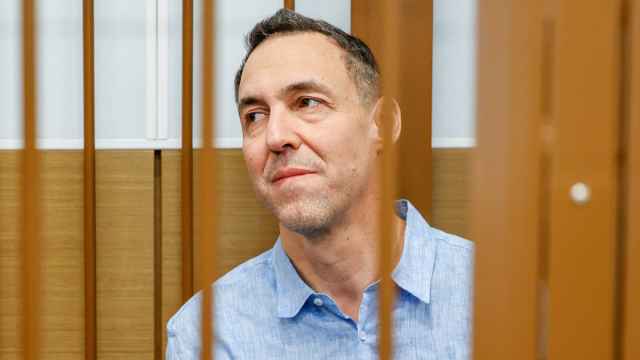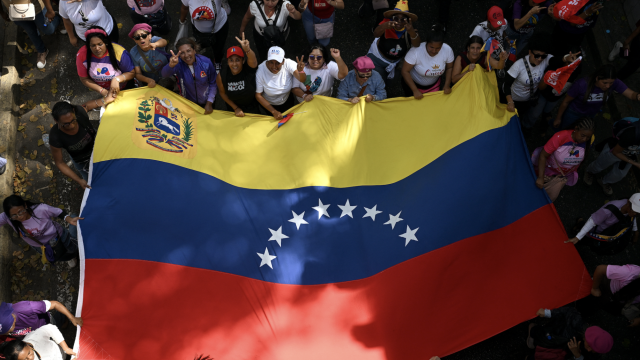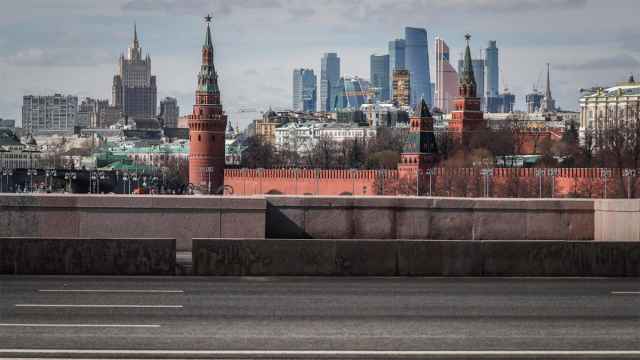With gold prices hovering around record highs of $1,515 an ounce and the U.S. dollar tumbling against the ruble, a recommendation by Vladimir Putin five years ago to buy more gold looks extraordinarily farsighted.
Putin, then the president, suggested in November 2005 that the Central Bank increase the share of gold in its reserves, just as gold prices hit an 18-year peak of $493 an ounce.
"In gold," Putin added, speaking during a tour of the Magadan region, "the Russian population could find an investment alternative to the dollar and euro."
A month later, the Central Bank started a tangible buildup of the gold stock in its vaults, its data show.
Gold accounted for $3.7 billion of its reserves in 2005, measuring between 3 percent and 2.2 percent of the total, as the dollar portion grew. But by this month, the proportion of gold in its reserves had reached 7.8 percent, the bank said. It has said it was considering boosting the share to 10 percent.
The bank's ongoing efforts to buy gold are taking on a new shine now that many economists spell doom and gloom for the U.S. dollar, which could weaken further as the U.S. government struggles with an enormous $14 trillion debt.
There's a chance that the United States will opt for a currency emission to ease its debt burden, which would further reduce the value of the greenback, said Alfa Bank economist Natalya Orlova.
"This risk is considerable," she said.
The argument against putting too much gold in the reserves is the limited liquidity of the commodity, Orlova said.
International Monetary Fund data released last week show that the Central Bank increased its gold reserves by 18.8 tons to 811.1 tons in March. The World Gold Council ranks the regulator as the eighth-largest holder of the metal among central banks worldwide.
The United States tops the World Gold Council's list with a long stable 8,133 tons, or 75 percent of its reserves, followed by Germany and the International Monetary Fund.
The Central Bank bought 136.6 tons of gold last year. Its first deputy chief Georgy Luntovsky said in January that the regulator looked to buy at least 100 tons of the metal every year.
Gold also beckons other emerging economies that are wary of the dollar. Mexico boosted its gold stock in February and March by a massive 93.3 tons worth more than $4 billion, adding to holdings of a mere 6.9 tons, according to the IMF.
A Central Bank spokesman declined comment Thursday.
While justifying the Central Bank's gold policy, the sliding dollar also helps the country's fiscal authorities by taming inflation.
Russia imports a lion's share of its consumer goods — meaning the weaker the dollar, the less people spend on both staples and durable goods.
The dollar edged up 1.2 percent to 27.9 rubles on Thursday as Urals crude, Russia's main export, stayed almost unchanged at $110.60 a barrel.
As of May 5, the ruble has appreciated 12 percent since the start of this year on the back of expensive oil. This came despite the huge capital outflows of almost $50 billion in the past eight months, which went a long way toward offsetting the effect of higher oil prices, Alfa Bank said.
A strong ruble hurts exporters, who earn fewer rubles for their oil, natural gas and metals on the foreign markets at the same time as their ruble-denominated expenses to produce the resources increase every year with inflation.
Exporters brought up the issue at a meeting with Prime Minister Putin last month, and he ordered the government to consider weakening the ruble. Finance Minister Alexei Kudrin said later that he preferred lower inflation — and the lower loan rates for a recovering economy — over a weaker ruble. But he admitted that every ruble off the dollar's value will deprive the federal budget of 204 billion rubles in revenues this year if the oil price stays at the current level.
The Central Bank made an attempt for lower inflation when it increased its key refinancing rate to 8.25 percent at the end of last month, Otkritie chief economist Vladimir Tikhomirov said. The regulator is likely assessing the impact of the recent jump in gasoline prices before it makes further moves, he said.
The inflation rate, which now looks on track to reach upward of 9 percent, could slow down considerably in the second half of the year, Tikhomirov said. The reasons include a lower base for comparison — or a lower rate in the same period last year — and the chance of a good harvest that would cause food prices to go down, he said.
The ruble will weaken only with a drop in oil prices rather than due to any Central Bank intervention, he said.
In what looks like proof of this viewpoint, the Central Bank didn't bother snapping up too many dollars on the market in April — a strategy that helped the ruble to appreciate. It said Wednesday that it had bought a total of $3.66 billion, the lowest level since January.
By buying and selling dollars, the bank manages the ruble's exchange rate.
A Message from The Moscow Times:
Dear readers,
We are facing unprecedented challenges. Russia's Prosecutor General's Office has designated The Moscow Times as an "undesirable" organization, criminalizing our work and putting our staff at risk of prosecution. This follows our earlier unjust labeling as a "foreign agent."
These actions are direct attempts to silence independent journalism in Russia. The authorities claim our work "discredits the decisions of the Russian leadership." We see things differently: we strive to provide accurate, unbiased reporting on Russia.
We, the journalists of The Moscow Times, refuse to be silenced. But to continue our work, we need your help.
Your support, no matter how small, makes a world of difference. If you can, please support us monthly starting from just $2. It's quick to set up, and every contribution makes a significant impact.
By supporting The Moscow Times, you're defending open, independent journalism in the face of repression. Thank you for standing with us.
Remind me later.






